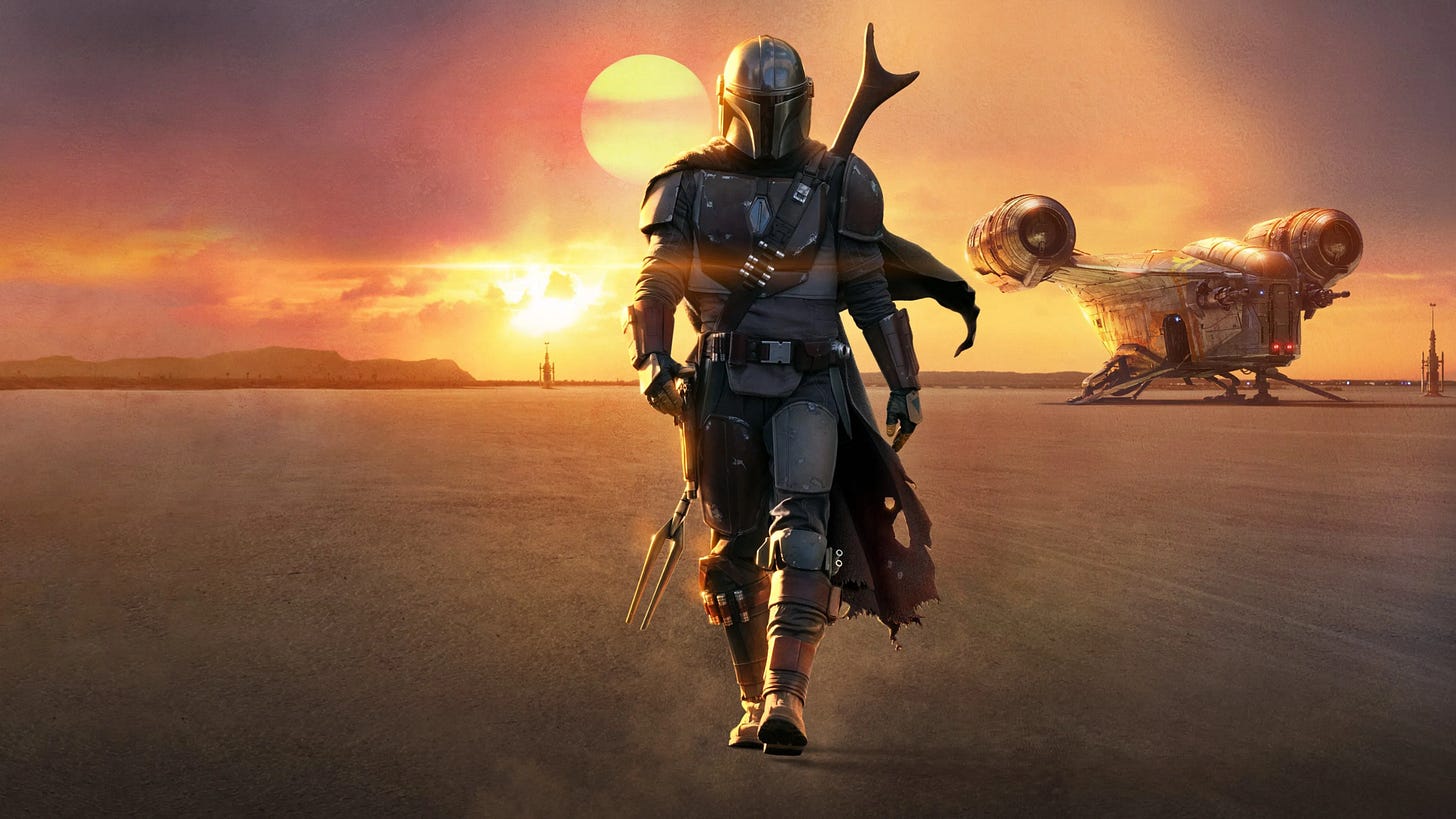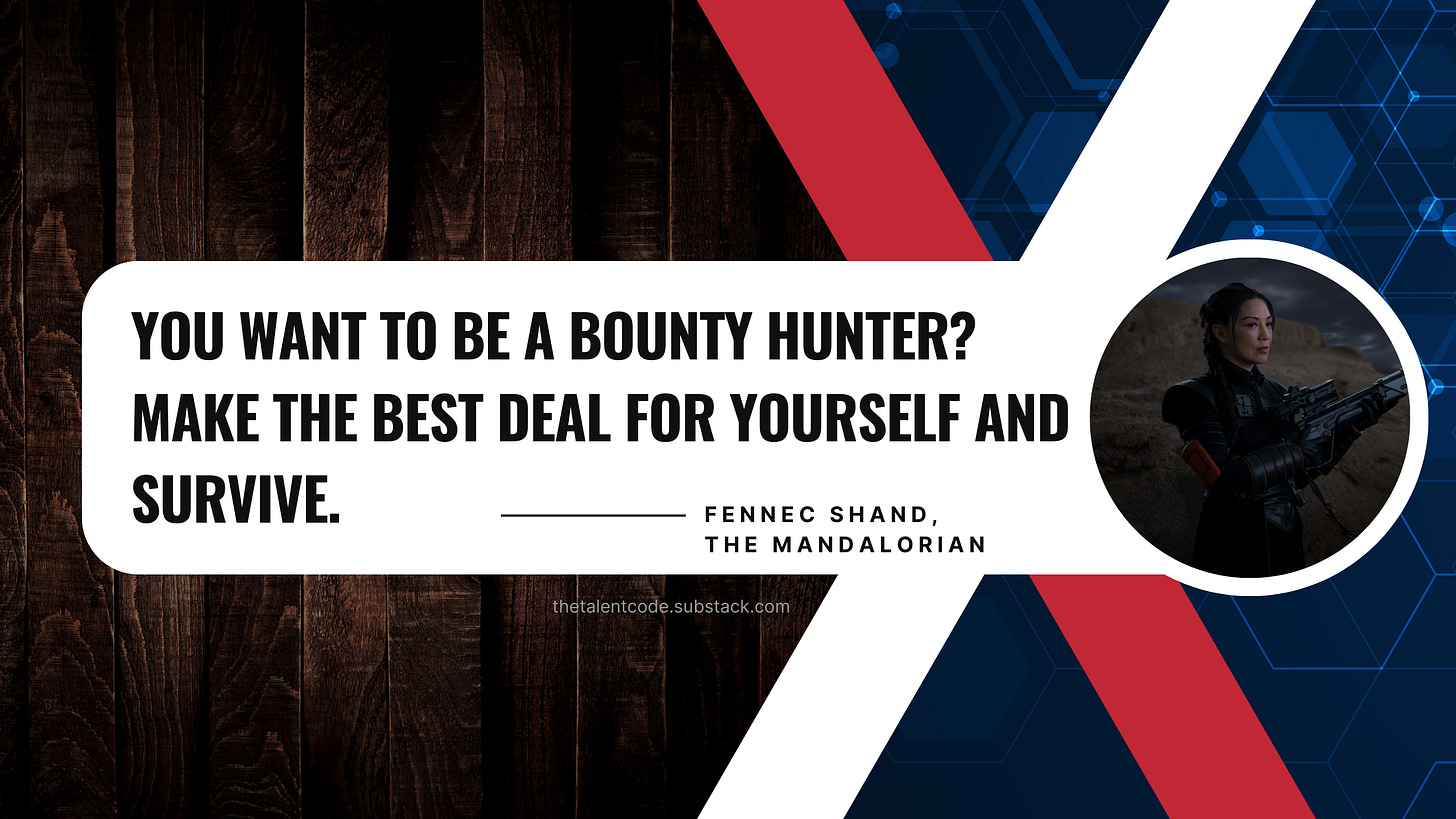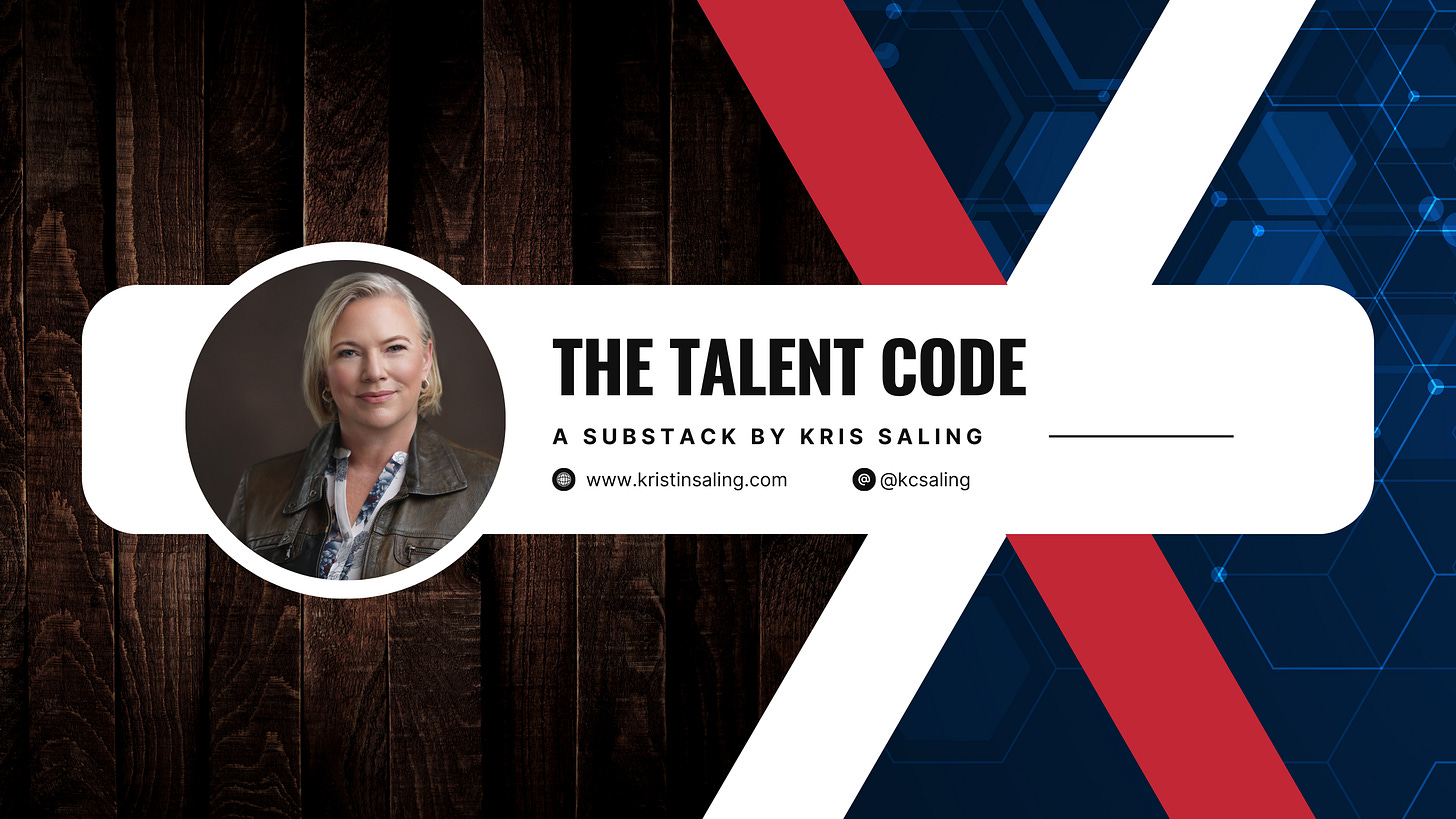Creating Change Resilience
Teaching your people resilience to ambiguity and disruption
If you want examples of how to navigate a VUCA environment, I offer up The Mandalorian as a masterclass (and I will warn you right now that if you don’t recognize the value of being able to drop “This is the way” and “I have spoken” in conversation, then we can’t be friends).
The Mandalorian is for all intents and purposes a space Western. It begins five years after the events of The Return of the Jedi and the galaxy is in chaos. The Empire has fallen. The Rebellion has claimed victory. The New Republic is rising.
But…
The galaxy is a big, big, big place.
Many of the outer systems have no idea that the Emperor was defeated and the Empire has fallen and they’re conducting business as usual. They don’t recognize the authority of the New Republic, or even know it exists. And the New Republic is, well, new, and really has no idea how to manage the territory it has suddenly found itself responsible for governing.
Those of us who have been deployed in the last twenty years can’t help but watch this and know exactly what that environment feels like.
We sympathize with the lone Mandalorian bounty hunter making his way through this fractured galaxy, trying to complete his missions regardless of the chaos around him. Every planet is different. Every faction has its own rules. Every ally could be an enemy tomorrow, or one drink from now. To survive, he needs more than skill with a blaster or a spaceworthy ship. He needs the ability to adapt, interpret, and act in an environment where nothing is certain.
This, in a nutshell, is change resilience.
If the last few year have taught us anything—through pandemics, political shifts, AI breakthroughs, budget battles, political violence, and cultural upheavals—it’s that we and our workforce need that, too.
Let’s decode it. 🚀
What Is Change Resilience?
At first, I toyed around with calling this change literacy or just plain adaptability. But that felt like I was just adding to the current collection of courses and classes without really getting after what I was trying to train.
We talk a lot about digital literacy, data literacy, AI literacy. These are the technical skills that help us navigate tools and technologies. But in an environment where disruption is constant, we also need a broader skill.
Resilience.
Resilience is the ability to adapt well in the face of adversity, trauma, tragedy, threats, or significant stress. It’s a set of behaviors, thoughts, and actions that can be developed over time to help us cope with setbacks and remain calm in the face of chaos. So…
Change resilience is the ability to understand, interpret, and respond constructively to disruption, ambiguity, and transformation.
It’s not about pretending disruption doesn’t bother us or hurt. It’s not even about tolerating it. It’s about developing the muscles to live inside it successfully.
Just as we train people to code, analyze, or troubleshoot, we should be training people to sense, adapt, regulate, and learn when the ground shifts under them.
Because here’s the truth: change isn’t episodic anymore. It’s the condition of leadership and life.
Why We Need It Now
Let’s be honest. The Mandalorian’s galaxy isn’t so different from our own.
Disruption is everywhere. AI is rewriting entire industries in real time. Political instability throws federal priorities into flux. The push-and-pull of return-to-office continues to scramble workforces.
Signals are noisy. The New Republic can’t get its message through to the outer rim. Our own institutions struggle to communicate across social media and traditional channels. In the noise, trust erodes.
Old systems no longer apply. The Empire’s rules are gone. Our own organizations still cling to outdated hierarchies, slow approval chains, and risk-averse cultures designed for stability in a world that no longer exists.
Without change resilience, people freeze, resist, or burn out. They retreat to nostalgia for “how we’ve always done it” instead of embracing the messy but necessary work of reinventing.
With change resilience, people can move through uncertainty with confidence. They can improvise without panic. They can see disruption not as a threat to survive but as a terrain to navigate.
Core Competencies of a Change Resilient Workforce
So what does change resilience actually look like in practice? It’s not one skill, it’s a set of capabilities he draws on depending on the situation. For us, the toolkit looks a heck of a lot like this:
Sensemaking: The ability to filter noise, spot patterns, and ask: What does this really mean for us?
Adaptability: The willingness to try a new approach without waiting for perfect instructions.
Emotional Regulation: Managing fear, frustration, and ambiguity—so people don’t get stuck in fight, flight, or freeze.
Collaboration: Building coalitions that carry change forward. Like the Mandalorian forming unlikely alliances, change-makers need networks, not silos.
Learning Agility: Treating each change as a chance to upskill. Asking, What can this disruption teach me? instead of, Why is this happening to me?
When organizations deliberately build these skills, they transform change from an exhausting drain into a renewable source of strength.
How Leaders Build Change Resilience
Change resilience, like any kind of resilience, isn’t innate—it’s cultivated. Leaders have a responsibility to design environments where their people can practice and strengthen these muscles.
Here are a few starting points:
Normalize Disruption
Stop, stop, stop pretending stability is coming back.
Talk openly about uncertainty. Treat disruption as the default condition, not an exception.
Model Flexibility
Show how you pivot.
Don’t just celebrate success—explain the process of trial and error that got you there.
Create Psychological Safety
Make it safe to ask questions, challenge assumptions, and experiment.
People can’t build resilience if they’re punished for failing.
Provide Playbooks
Tools like RACI charts, retrospectives, and frameworks for decision-making bring clarity amid chaos.
They don’t eliminate ambiguity, but they give people structure for handling it.
Invest in Training
Treat change skills like digital skills.
Run workshops on adaptability, scenario planning, and resilience.
Make it clear that this training is part of professional development, not just personal survival.
This isn’t fluffy “soft skill” work. It’s survival strategy. The same way the Mandalorian relies on both his weapons and his wits, organizations need both technology and human adaptability to thrive.
The Human Advantage
Here’s where it gets exciting.
AI, automation, and advanced analytics are brilliant at handling routine, repeatable tasks. They can even surface patterns faster than humans can. But when disruption is novel, when ambiguity is high, when emotions and trust are on the line—that is human terrain.
The Mandalorian doesn’t win because he has the biggest guns. He wins because he’s clever. He can navigate alliances, weigh moral choices, and improvise in situations no one’s trained for.
That’s the essence of the human advantage. And that’s why building change resilience is non-negotiable for modern workforces.
The Mandalorian Lesson
At its heart, The Mandalorian is a story about resilience. It’s about one individual navigating chaos with a code, building relationships that sustain him, and adapting to a galaxy that refuses to recognize anyone’s rule set.
That’s the same challenge facing every organization today.
We can’t control the pace of disruption. We can’t guarantee stability. But we can build the capacity to move through uncertainty without losing our mission, our values, or our people.
Every organization today is living in its own version of the Star Wars galaxy after the fall of the Empire: fractured, noisy, unpredictable. The Empire of old systems may have fallen, but the New Republic hasn’t taken hold.
We’re in that kind of environment, where change is the norm, uncertainty is everywhere, and there’s no end in sight. And we have to train ourselves for an environment where certainty may never be a thing again.
Can you do it? Can your people? Will you try to lock yourself into a routine, to dig in even though you know digging in is a death sentence (it makes you a fixed target when the last thing you want to be is fixed), or will you learn to be mobile, agile, flexible?
Change resiliency is the difference.
Because in a world where change is the only constant, the ability to thrive in ambiguity is not optional.
This is the way.
A few other updates…
I provided the keynote presentation for the Association for Talent Development: Government Workforce event at the Walter Washington Convention Center in DC on why we are more than a number—and why modern talent management must happen at a personal level. We’ll be visiting that here soon.
My book was short-listed for the getAbstract International Book Award 2025 in the Learning Impact category!
We launched a look at the guiding principles of AskArmyHR, our intelligent engagement and Soldier experience platform, coming soon! We’re closing out Phase 1 of our submissions with Phase 2, demos and tech challenge, to begin soon. Our vendors should be notified this week or next of their status!
Here’s wishing everyone a great start to their week!




